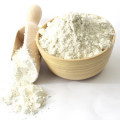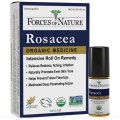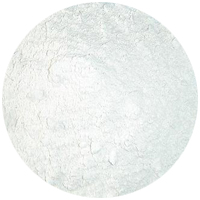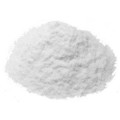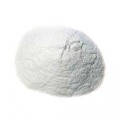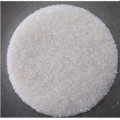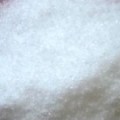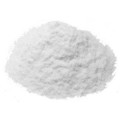 Loading... Please wait...
Loading... Please wait...- Home
- About Us
- Shipping, Returns & FAQ's
- Contact Us
-
For Your Information
- Canadian Customers Have a Choice if Shipping Via UPS
- Aura Cacia Homemade Aromatherapy Recipes
- Bella Nella Altered Art & Paper Crafts Blog
- Forms of Herbal Preparations
- Laundry Tips To Conserve Energy Blog from The Laundress
- The Story of Frontier Natural Products Co-Op
- Sovereign Silver Hydrosol and Aloe Protocol Stops Downward Spiral of Gut Dysbiosis
- Disclaimers
- Recommended Links
- RSS/Recent News
- The Story of Typhoon Housewares
- Reviews/Testimonials
- Raw Ingredients for Mfg
- Home
- Raw Materials
- Nutraceuticals
- Malic Acid Anhydrous FCC Fine Granular Bulk
- Home
- Raw Materials
- Acids
- Malic Acid Anhydrous FCC Fine Granular Bulk
Malic Acid Anhydrous FCC Fine Granular Bulk
Product Description
It's considered an alpha-hydroxy acid, a class of natural acids commonly used in skin-care products. Also as a dietary supplement, malic acid is said to offer a variety of benefits.
Alpha hydroxy acids include citric acid (found in citrus fruits), glycolic acid (found in sugar cane), lactic acid (found in sour milk), malic acid (found in apples), tartaric acid (found in grapes), and others.
Uses for Malic Acid
In alternative medicine, malic acid is typically used to improve sports performance when taken in supplement form. Proponents claim that malic acid can boost endurance during exercise and help fight off fatigue.
In addition, consuming malic acid in combination with magnesium is said to alleviate symptoms of fibromyalgia (including pain).
When applied to the skin, malic acid is used to reduce signs of aging (including wrinkles), remove dead skin cells, for moisturizing, aid in the treatment of acne and acne scars, promote the production of collagen (a type of protein that serves as a major component of your skin) which enhances firming and smoothing skin.
As per webmd, it is likely effective for treating sun damage when applied to the skin in a cream or lotion, but alpha hydroxy skin peels do not seem to work for this use. Treating dry skin when applied to the skin in a cream or lotion.
Malic acid is also used as a flavor enhancer for many drinks and candies. It is especially common in diet sodas and other artificially sweetened drinks. This is also true of artificially sweetened candies, such as gum and other gummy candies. Because of its highly versatile nature, especially in masking unnatural flavors, it has become an important part of nearly any food product that contains alternative sweeteners.
A 2009 study published by a group of doctors in the "Journal of Clinical Biochemistry and Nutrition" suggested that malic acid is beneficial in lowering blood pressure (along with other acids, such as various types of vinegar). While more studies are necessary to bring about more conclusive results, it's a promising lead on a blood pressure-lowering supplement.
Dentists commonly use malic acid as a cleansing agent on a tooth before filling a cavity. The malic acid removes any particles of food left behind, and leaves a completely clean surface for the dentist to work on, all while being safe for to swallow in small amounts.
The following doses have been studied in scientific research:
- For treating skin wrinkled and aged by sunlight: Alpha hydroxy acid products containing lactic acid, tartaric acid, gluconolactone, or glycolic acid (GA) in 8% concentration are used. The alpha hydroxy acid gluconolactone has also been used in a 14% solution. These products are usually applied to the skin twice daily.
- For improving the appearance of acne scars: glycolic acid (GA) facial peels are used. Peels of increasing strength of 20%, 35%, 50%, and 70% are applied every two weeks. Peels are applied first for 2 minutes and then for a longer time (up to 4-5 minutes) before applying the next stronger solution. Completing the series at least 6 times is usually needed before skin looks better. People who do not like facial peels often use 15% GA lotion daily long-term instead.
- For lightening brown patches due to a condition called melasma: a 10% lotion of the glycolic acid (GA) is applied with a sunscreen to facial skin nightly for 2 weeks. Then a peeling program is done monthly for 3 months in a row. The peeling program features a 50% GA peel applied three times to the face and left on for a period of 2-5 minutes each time (first peel 2 minutes, second peel 4 minutes, and third peel 5 minutes).
Scientific Name: Hydroxybutanedioic acid
aka: Acide 2-hydroxypropionique (Acide Lactique), Acide Alpha-Hydroxyéthanoïque, Acide Citrique, Acide de Pomme, Acide Dihydroxysuccinique (Acide Tartrique), Acide Glycolique, Acide Hydroxyacétique (Acide Glycolique), Acide Hydroxycaprylique, Acide Hydroxypropionique, Acide Hydroxysuccinique, Acide Lactique, Acide Malique, Acides Alpha-Hydroxylés, Acidos Alfa-Hydroxi, AHA, Alpha Hydroxy Acides, Alpha-Hydroxyethanoic Acid, Apple Acid, Citric Acid, Dihydroxysuccinic Acid (Tartaric Acid), Gluconolactone, Glycolic Acid, Hydroxyacetic Acid (Glycolic Acid), Hydroxycaprylic Acid, Hydroxypropionic Acid, Hydroxysuccinic Acid, Lactic Acid, Mixed Fruit Acid, Monohydroxysuccinic Acid (Malic Acid), 2-hydroxypropionic acid (Lactic Acid).
Origin: USA
Notes: U Pareve & M Halal Kosher Certified.
Specifications are subject to change without notice.
* FDA disclaimer
References
about.com
webmd.com
acidpedia.com
livestrong
You Recently Viewed...
Currency Converter
Choose a currency below to display product prices in the selected currency.




